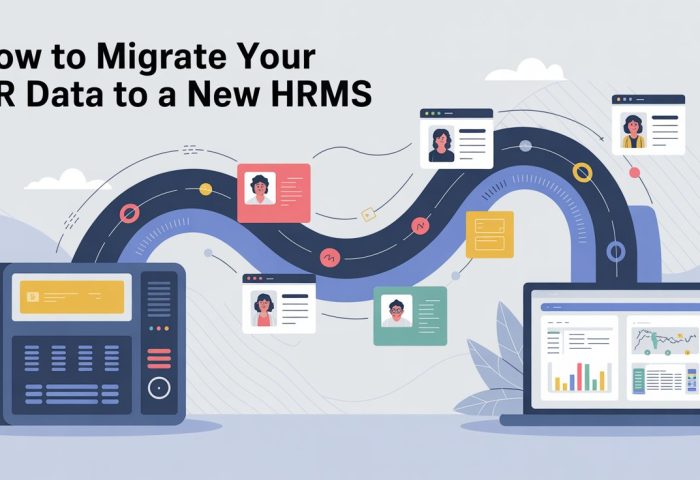For any organization, switching to a modern HRMS (Human Resource Management System) is a giant leap. Whether you’re transitioning from spreadsheets or escaping outdated software, smooth HR data migration ensures continuity, accuracy, and compliance. This blog takes you through each phase with practical pointers, important actions, and one considerable recommendation- DoInsights, being the best HRMS tool for smooth workflow with the inclusion of CRM and project management in one platform.
Step 1: Plan the Migration Strategy
Key Actions:
- Define the scope of data to be migrated
- Allocate responsibilities to HR, IT, and vendor teams
- Set timelines and a communication plan
- Choose internal or external migration support
Why this matters:
A coherent strategy is everything to everybody. It will not allow one to merely throw data at a process without making the process itself. Planning for it tends to not force surprises but enable business-as-usual during transition.
Step 2: Audit and Clean Existing HR Data
Key Actions:
- Identify and remove duplicate entries
- Fix missing or inconsistent values
- Validate personal data with employees
- Ensure compliance with GDPR and local regulations
Why this matters:
Removing messy data means pulling all the problems into your new system. Clean Data enables analytics, reduces errors, and enhances decision-making. It also provides a good opportunity to standardize employee records.
Step 3: Categorize and Map the Data
Key Actions:
- Match old data fields to new HRMS fields
- Standardize formats (e.g., dates, job titles)
- Map custom fields like leave policies or payroll codes
- Document everything for auditing
Why this matters:
Data mapping guarantees that everything settles in its correct place after migration. Without this step, you risk broken workflows and incorrect reports. Due diligence in mapping equates to a smoother transition into the new system.
Step 4: Conduct a Test Migration (Dry Run)
Key Actions:
- Migrate a small data set to the new HRMS
- Run key HR functions (e.g., payroll, attendance, reports)
- Compare test results with the old system
- Identify and resolve errors early
Why this matters:
A dry run helps you identify structural or mapping-related issues before they get out of hand. It gives the team some exposure to the new system and builds confidence in the accuracy and reliability of the data.
Step 5: Perform the Final Data Migration
Key Actions:
- Freeze the current system to avoid last-minute updates
- Migrate full HR data to the new HRMS
- Validate post-migration reports and records
- Check integrations like payroll, finance, or CRM
Why this matters:
It’s the most crucial phase for change. An absolutely clean transition will permit the HRMS to be operational from the first hour. Just ensure that everyone understands when and how to start using the new system.
Step 6: Post-Migration Review and Optimization
Key Actions:
- Train HR and relevant teams on the new HRMS
- Gather employee feedback on usability
- Set up data validation reports
- Adjust workflows and settings based on real usage
Why this matters:
Migration does not stop at data transfer. Review and adjustments make sure your system reflects how your team truly works. It’s also a good time for an overhaul of HR policies and the automation of manual work.
Bonus: Choose an All-in-One System to Avoid Silos
Key Actions:
- Evaluate platforms offering HR, CRM, and project tools together
- Prioritize systems that offer native integrations
- Consider long-term scalability and reporting needs
- Look for role-based access and flexible workflows
Why this matters:
Various applications used by HR, Sales, or Project Management can create duplication of efforts, confusion, and data soiling. In an effort to merge these systems, the choice of a unified platform compels the streamlining of operations and enhanced collaboration across departments.
Why DoInsight is the Best HRM Tool for Smooth Workflow
DoInsight is an advanced system that consolidates HRMS, CRM, and Project Management, all in one integrated solution. It is designed for companies where teams seek to work towards removing friction and enhancing visibility across the landscape of their organization.
Why choose DoInsight:
- Easy HR data import and structured migration support
- Centralized records for HR, sales, and project workflows
- Seamless real-time dashboards and customizable reports
- Automations that save time and reduce manual effort
- Intuitive interface with minimal training required
If you’re looking for the best HRM tool for smooth workflow, DoInsight is your ideal partner. It’s scalable, user-friendly, and designed to align with today’s hybrid workforces.
Final Checklist Before You Migrate
Make sure you’ve got the essentials ready:
- Migration strategy documented
- Data audited and cleaned
- Field mappings and formats aligned
- Test migration successfully completed
- Go-live and training plan prepared
- Chosen a robust, integrated platform like DoInsight
Final Thoughts
Data migration is not just a technical switch, but an opportunity to transform your entire HR operations. Clean data and a strategically defined roadmap make it possible for organizations to prepare for the future of HR with efficiency unlocked using a flexible platform like DoInsight.
Are you looking for expert help or a tailored migration playbook for your organization? Let us connect and explore how DoInsight can help reinvent your business workflows today. To work smarter and get better results, connect with DoInsights.


